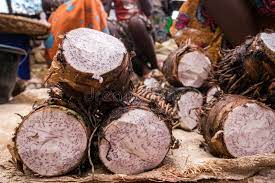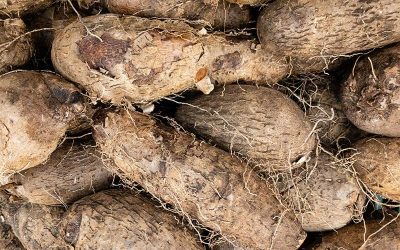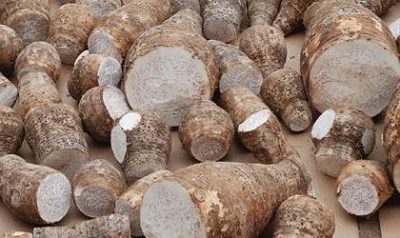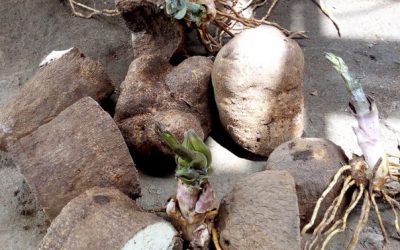Growing Yams in Kenya

Yam is a preferred food security crop in the drier areas of Kenya. One plant is reported to be able to produce 1 full 90 kg bag of tubers, which can be harvested a few at the time for home consumption or sold in the market for a good price.
Many families in Kenya plant yam near the trees in the shamba (farm), so they can get support for climbing vines.
Annual rainfall range for growth is 700-8000 mm with the optimum between 1200-4000 mm.
Reported temperature range for growth is 14-40°C with the optimum between 20-32°C or 25-30°C. The growth is considerably retarded at temperatures below 20°C.
Deep, fertile, well drained, loose, loams and sandy-loam soils with low levels of salinity are required. It responds well to manuring. However, compared with other tropical tuber crops, yams require soil of high fertility.
Tuber dormancy lasts for 2-4 months after harvest.
Small intact tubers (“seed tubers”) or tuber pieces weighing 50-500 g are used for planting on mounds, ridges, or on the flat.
Intercropping is the most common practice, with the distance between yam plants determined by the number and types of the other crops in the field. Where sole cropping is done, rows are 1 m apart, with intra-row spacing of 50-100 cm.
Plants are usually staked soon after emergence. Weeding is done 3-4 times during the season, using hand tools.
Harvesting occurs 7-10 months after planting.
Hand tools are used to dig up the tubers. Although the tubers can be kept quite well, they are easily damaged during and after harvest, and must be handled carefully to avoid bruises


